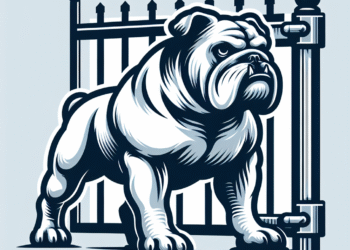Bully breed dogs, often misunderstood and stigmatized, require special attention and nurturing environments to thrive. Creating safe spaces for these dogs is not only crucial for their well-being but also for community harmony. Here are essential tips for fostering bully breed dogs effectively and compassionately.
Understanding Bully Breeds
Bully breeds include various breeds such as Pit Bulls, American Bulldogs, Doberman Pinschers, and Boxers. While these dogs often face negative stereotypes, they are known for their loyalty, intelligence, and affection. The key to successful fostering lies in understanding their unique characteristics and needs.
1. Create a Calm Environment
Quiet Space
Set aside a quiet area in your home where the dog can retreat. This space should be free from loud noises and distractions, helping the dog feel secure. Use cozy bedding, blankets, and their favorite toys to make it inviting.
Consistent Routine
Bully breeds thrive on routine. Regular feeding, exercise, and playtime create a sense of stability. Predictability reduces anxiety and helps the dog feel more at home.
2. Socialization Efforts
Gradual Introductions
When introducing bully breeds to new people or pets, take it slow. Monitor interactions closely and ensure that they are positive. Use treats and praise to encourage good behavior and build trust.
Positive Reinforcement
Focus on rewarding good behaviors rather than punishing unwanted ones. Use treats, verbal praise, and play to reinforce positive interactions, making the experience enjoyable for the dog.
3. Training is Key
Basic Obedience
Teach basic commands like sit, stay, and come. Obedience training not only provides mental stimulation but also strengthens the bond between you and the dog. Using positive reinforcement techniques will help foster a responsive and well-behaved pet.
Professional Training Classes
Consider enrolling the dog in professional training classes, particularly those that focus on bully breeds. These classes can provide valuable socialization opportunities and guidance from experienced trainers.
4. Engage in Physical and Mental Exercise
Regular Exercise
Bully breeds need regular physical activity to burn off excess energy and maintain a healthy weight. Daily walks, playdates, and engaging toys can keep them active and mentally stimulated.
Mental Challenges
Incorporate puzzle toys or interactive games to challenge their intellect. This not only keeps them entertained but also helps reduce behaviors stemming from boredom.
5. Provide Proper Identification
Microchipping and Tags
Ensure that the dog is microchipped and has proper identification tags. This step is essential in case they ever escape or get lost, enabling a safe, quick return home.
Knowledge of Local Laws
Be aware of local laws regarding bully breeds. Some areas have restrictions or specific requirements for owning these dogs. Understanding these laws can help prevent unnecessary complications.
6. Advocate for the Breed
Share Your Experience
Help change perceptions about bully breeds by sharing your positive experiences. Engage in local community events, or social media platforms to promote understanding and acceptance of these dogs.
Foster Support Networks
Connect with local rescue organizations and support groups dedicated to bully breeds. Engaging with others who share your commitment can provide valuable resources and foster a supportive community.
Conclusion
Fostering bully breed dogs requires patience, understanding, and commitment. By creating safe spaces and fostering positive environments, you not only help these dogs flourish but also contribute to changing perceptions about them. With love and nurturing, bully breeds can become devoted companions and ambassadors for their kind, proving that stereotypes can be shattered one paw at a time.














